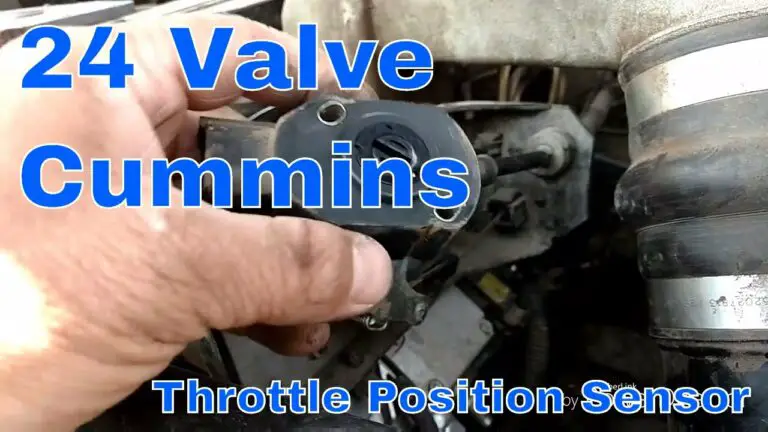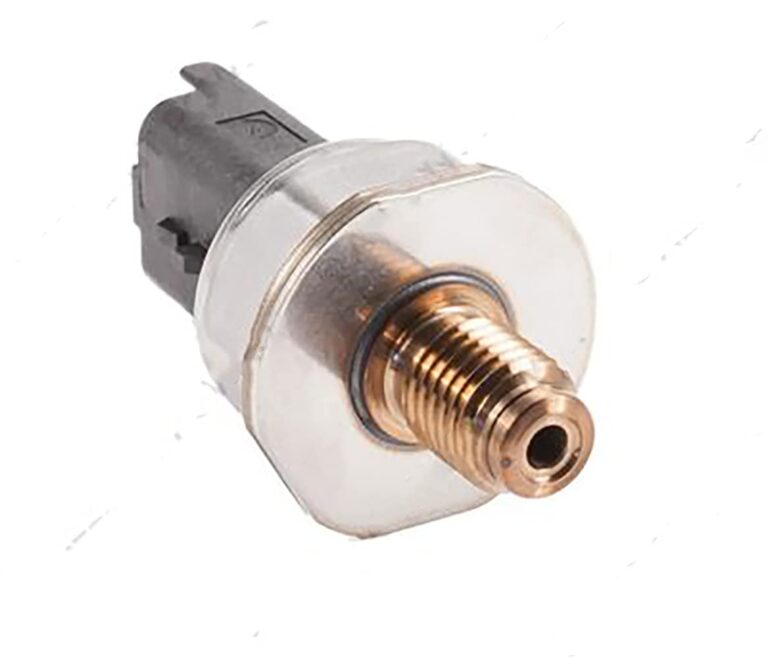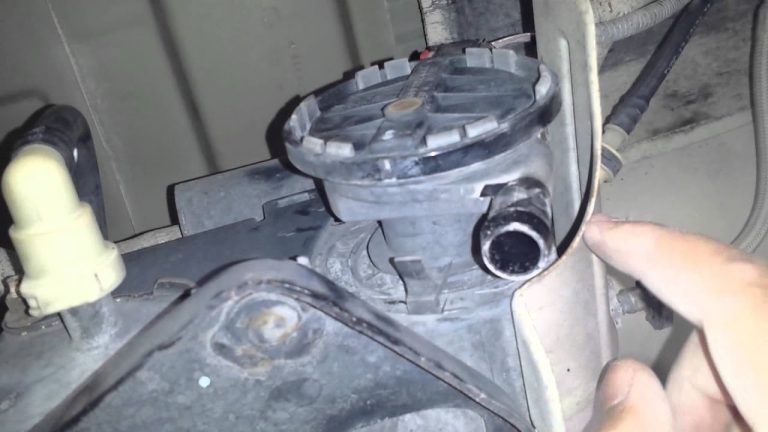Dodge 4.7 Map Sensor Location: Find Your Sensor with Ease
The Dodge 4.7 MAP sensor is usually located on the intake manifold.
Introduction To The Dodge 4.7 Map Sensor
Welcome to our blog post, where we will be taking an in-depth look at the Dodge 4.7 MAP Sensor. In this section, we will provide an overview of the importance of the MAP sensor in a Dodge 4.7 engine and explain how the MAP sensor works. The MAP sensor plays a crucial role in ensuring optimal engine performance, and understanding its function is essential for any Dodge 4.7 engine owner. Let’s dive in and explore the world of the Dodge 4.7 MAP Sensor!
The MAP sensor, also known as the Manifold Absolute Pressure sensor, is a vital component in the Dodge 4.7 engine. It measures the intake manifold pressure and provides essential data to the powertrain control module (PCM). This data is crucial for the PCM to determine the engine’s load and make accurate calculations for fuel delivery and timing control. By continuously monitoring the manifold pressure, the MAP sensor ensures that the engine receives the correct amount of fuel and air mixture, allowing for optimal combustion and performance.
Without a properly functioning MAP sensor, the engine may experience various issues that can negatively impact its performance and efficiency. These include:
- Rough idle
- Poor fuel economy
- Slow acceleration
- Strong smell of gasoline (especially at idle)
In addition, a faulty MAP sensor can lead to a lean or rich air-fuel ratio, causing problems such as surging, stalling, lack of power, hesitation on acceleration, backfiring through the intake, and even engine overheating. It is important to address any MAP sensor issues promptly to avoid further damage to the engine.
The MAP sensor works based on the principle of converting engine vacuum or manifold pressure into an electrical signal. It consists of a diaphragm that moves with the changes in pressure. As the manifold pressure changes, the diaphragm in the MAP sensor moves, altering the electrical resistance within the sensor.
The changes in resistance are then converted into a voltage signal, which is sent to the PCM. The PCM uses this signal to determine the load on the engine and make necessary adjustments for fuel delivery and timing control. It’s worth noting that the voltage signal generated by the MAP sensor is directly proportional to the pressure or vacuum within the intake manifold.
In summary, the MAP sensor is a vital component in the Dodge 4.7 engine, providing essential information about the intake manifold pressure to the PCM. This information enables the PCM to make accurate calculations for fuel delivery and timing control, ensuring optimal engine performance. Understanding how the MAP sensor works is crucial for troubleshooting and maintaining the Dodge 4.7 engine.
Symptoms Of A Faulty Map Sensor
The MAP (Manifold Absolute Pressure) sensor plays a crucial role in ensuring the engine performs optimally. When this sensor malfunctions, it can lead to various issues affecting the air-fuel ratio, resulting in both rich and lean conditions. It’s important to be aware of the symptoms associated with a faulty MAP sensor so that you can address any potential issues promptly.
Rich Air-fuel Ratio And Its Warning Signs
A rich air-fuel ratio occurs when there is an excess of fuel in relation to the amount of air being used for combustion. This can be caused by a faulty MAP sensor, resulting in the following warning signs:
- Rough idle
- Poor fuel economy
- Slow acceleration
- Strong smell of gasoline at idle
Lean Air-fuel Ratio And Its Warning Signs
A lean air-fuel ratio, on the other hand, happens when there is not enough fuel in proportion to the amount of air being used for combustion. Here are the warning signs that may indicate a faulty MAP sensor causing a lean air-fuel ratio:
- Surging
- Stalling
- Lack of power
- Hesitation on acceleration
- Backfiring through the intake
- Overheating
Identifying these symptoms can help you diagnose a faulty MAP sensor and take the necessary steps to address the issue. Consult a professional mechanic or refer to the vehicle’s service manual for proper diagnosis and replacement procedures.
Common Symptoms Of A Faulty Map Sensor
A MAP sensor, or Manifold Absolute Pressure sensor, plays a crucial role in monitoring the intake manifold pressure of a vehicle. It measures the amount of air entering the engine, helping the engine control unit (ECU) adjust fuel delivery and timing accordingly. However, a faulty MAP sensor can lead to various issues that can negatively impact your vehicle’s performance and fuel efficiency.
Excessive Fuel Consumption
One of the common symptoms of a faulty MAP sensor is excessive fuel consumption. When the MAP sensor sends incorrect values to the ECU, it may cause the ECU to inject more fuel into the cylinders than necessary. This leads to an imbalance in the air-fuel ratio and results in poor fuel economy. If you notice that your vehicle is burning through fuel more quickly than usual, it could be a sign of a faulty MAP sensor.
Poor Fuel Economy
A faulty MAP sensor can also cause poor fuel economy. As mentioned earlier, when the MAP sensor provides inaccurate readings to the ECU, the engine may receive more fuel than required. This can lead to a rich air-fuel mixture, resulting in decreased fuel efficiency. If you find yourself making frequent trips to the gas station despite driving under normal conditions, it may be worth checking the functionality of your MAP sensor.
Detonation
Another symptom of a faulty MAP sensor is detonation, also known as engine knocking. When the MAP sensor fails to provide accurate readings to the ECU, the ECU may advance the spark timing and inject excess fuel into the cylinders. This can cause the air-fuel mixture to ignite prematurely, resulting in detonation. Detonation can lead to engine damage and should be addressed promptly.
It’s important to note that these symptoms could also be indicative of other issues within your vehicle. Consulting a professional mechanic or using diagnostic tools can help accurately identify the root cause of these symptoms.

Credit: www.amazon.com
Map Sensor Location In A Dodge 4.7 Engine
Discovering the Dodge 4. 7 Map Sensor Location is crucial for diagnosing engine issues. Located near the throttle body, this sensor converts manifold pressure into an electrical signal for the engine control module to adjust fuel delivery and timing control.
In a Dodge 4.7 engine, the Map sensor, also known as the Manifold Absolute Pressure sensor, plays a crucial role in ensuring optimal engine performance. It measures the intake manifold pressure and sends this information to the Engine Control Unit (ECU), which then adjusts the air-fuel mixture and ignition timing. Knowing the exact location of the Map sensor is essential for troubleshooting or replacing this component if it becomes faulty. This article will guide you on where the Map sensor is typically located in a Dodge 4.7 engine and the steps to locate it effectively.
Where The Map Sensor Is Usually Located In A Dodge 4.7 Engine
The Map sensor in a Dodge 4.7 engine is typically located on the intake manifold. It is usually positioned near the top of the engine, close to the throttle body assembly. The exact location may vary slightly depending on the specific Dodge model and year, but it can generally be found on the driver’s side of the engine. To locate the Map sensor accurately, follow the steps outlined below.
Steps To Locate The Map Sensor In A Dodge 4.7 Engine
- Open the hood of your Dodge 4.7 engine and secure it with the prop rod.
- Locate the intake manifold, which is typically a large metal component connected to the engine block. It is usually situated towards the center of the engine compartment.
- Inspect the intake manifold for any vacuum lines or electrical connectors as these can help you identify the Map sensor.
- If necessary, consult the vehicle’s service manual or documentation for a more precise location.
- Once you have identified the Map sensor, which resembles a small module with an electrical connector and a vacuum hose, visually inspect it to confirm that it matches the replacement part or troubleshoot any issues.
By following these simple steps, you can locate the Map sensor in a Dodge 4.7 engine efficiently. It is important to note that if you are unsure or uncomfortable performing this task, it is recommended to consult a qualified mechanic for assistance. Identifying the correct location of the Map sensor is crucial for troubleshooting and maintaining proper engine performance in your Dodge 4.7 engine.
How The Map Sensor Communicates With The Pcm
The MAP sensor on a Dodge 4. 7 engine is typically located on the intake manifold. It communicates with the PCM by converting manifold pressure into an electrical signal, providing crucial information for fuel delivery and timing control.
The Role Of The Map Sensor In Providing Information To The Powertrain Control Module (pcm)
The MAP sensor (Manifold Absolute Pressure sensor) plays a crucial role in the functioning of the engine by providing vital information to the Powertrain Control Module (PCM). This sensor is located on or within the intake manifold and measures the pressure within the intake manifold or the engine vacuum. It then converts these measurements into an electrical signal that the PCM uses to determine the engine load.
The PCM uses the data provided by the MAP sensor to make important decisions regarding fuel delivery and timing control. By knowing the engine load, the PCM can accurately adjust the amount of fuel injected into the cylinders, ensuring optimal air-fuel ratio for efficient combustion. This helps in improving fuel economy, reducing emissions, and maintaining smooth engine operation.
How The Map Sensor Data Is Used For Fuel Delivery And Timing Control
The MAP sensor data is vital in ensuring precise fuel delivery and timing control in the engine. Here’s how it works:
- Measuring engine load: The MAP sensor measures the pressure or vacuum within the intake manifold, which is directly related to the engine load. This data is crucial in determining how much fuel needs to be injected into the cylinders for efficient combustion.
- Optimizing air-fuel ratio: Based on the MAP sensor data, the PCM calculates the optimal air-fuel ratio for the current engine load. It adjusts the duration and timing of the fuel injection pulses to achieve the desired ratio, ensuring efficient combustion and optimal power output.
- Timing control: The MAP sensor data also helps in timing control, as the PCM needs to adjust the ignition timing accordingly for optimal engine performance. By accurately measuring the engine load, the MAP sensor ensures that the ignition timing is advanced or retarded at the right moment, leading to optimal power delivery and fuel efficiency.
In conclusion, the MAP sensor plays a vital role in providing accurate information to the PCM, which in turn ensures precise fuel delivery and timing control. The data provided by the MAP sensor helps in optimizing the air-fuel ratio, improving fuel economy, and maintaining smooth engine operation. Without the MAP sensor, the engine’s performance would be compromised, resulting in reduced power output and increased fuel consumption.
Frequently Asked Questions On Dodge 4.7 Map Sensor Location
What Is The Symptoms Of A Bad Map Sensor?
A bad MAP sensor can cause rich air-fuel ratio (rough idle, poor fuel economy), lean air-fuel ratio (surging, stalling, lack of power), and overheating.
What Happens When Map Sensor Goes Out?
When the MAP sensor goes out, the engine control module (ECM) receives incorrect values. This results in high fuel consumption, poor fuel economy, and detonation. Common symptoms include rough idle, poor acceleration, and strong gasoline odor.
Where Is Map Sensor Usually Located?
The MAP sensor is typically located on or near the intake manifold of the engine.
What Does The Map Sensor Tell The Pcm?
The MAP sensor tells the PCM the engine’s load by converting vacuum or manifold pressure into an electrical signal. This data helps the PCM control fuel delivery and timing.
Conclusion
The MAP sensor plays a crucial role in the functioning of your Dodge 4. 7 engine. By providing accurate data to the engine control module (ECM), it ensures optimal fuel delivery and timing control. If you experience symptoms such as rough idle, poor fuel economy, or lack of power, it may be time to check your MAP sensor.
Understanding its location and functionality can help you diagnose and replace it efficiently. With the right knowledge and tools, you can keep your Dodge running smoothly and efficiently. Take care of your MAP sensor, and it will take care of your engine.








